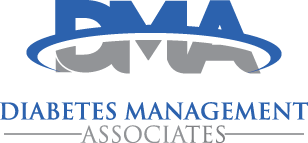Type 2 Diabetes (T2D) is an epidemic around the world. Currently, one out of every ten people are living with T2D. That number has been growing tremendously in the past 50 years and there is no sign of slowing down. There are currently more than 30 million American with diabetes. More than 4100 people are diagnosed with diabetes EVERY DAY in the US. That is 1,500,000 new diabetics every year.
The risk of becoming a T2D increase with age, race, genetics, environment, physical inactivity, stress, certain medical conditions such as obesity, and medications, particularly glucocorticoids or steroids.
Risk tools and resources
The American Diabetes Associations (diabetes.org) has a great tool to help determine your risk of becoming a T2D. You just need to answer a few simple questions. The good news is, if you find you are at risk of becoming a T2D, you still have time. T2D can be delayed by years or even prevented!
There are many resources to help change your lifestyle and prevent diabetes. Lots are free or very low cost.
- The National Diabetes Prevention Program (DPP) is a CDC program with local offices in most state. Check it out at cdc.gov/diabetes/prevention/lcp-details.html.
- Medicare Diabetes Prevention Program (MDPP). You can enroll by calling 1-800-MEDICARE or medicare.gov/coverage/diabetes-screenings.html
- Many YMCA facilities
- Life coaches can easily be found local or remote.
- Lifestyle tracking apps such as My Fitness Pal
Wouldn’t I know if I had diabetes?
There are many studies that suggest the onset of T2D occurs 4-7 years before symptoms. Symptoms often progress slowly and can easily be ignored. The most common symptom of diabetes is tired, excessive thirst and frequently urination.
How is diabetes diagnosed?
Determining if you are a diabetic can easily be done at home or by visiting your health care provider.
- Fingerstick glucose monitor and strips can be purchased at any pharmacy at a low cost and without a prescription. Some companies may give you a free meter that will come with a few strips. A fingerstick glucose value more than 126 after nothing to eat or drink for 8 hours can be a diagnosis of diabetes. Repeat this test more than once for more accuracy.
- The A1c test determines your average glucose for the past 3 months. This test can be purchased at a pharmacy, online such as Amazon or done by your healthcare provider. The results are:
- Normal is less than 5.7%
- Prediabetes is 5.7 to 6.4%
- Diabetes is 6.4% or higher
Is diabetes reversible?
YES….In 2009, the American Diabetes Association (ADA) added the term ‘remission’ to T2D descriptive terms. Glucose toxicity or very elevated glucose levels over a period of time is often found in newly diagnosed T2D. Controlling glucose levels with diet improvement and/or medications can lower the toxicity and allow the body to recover. Several studies point to weight loss as key factor for T2D remission. If normal glucose is sustained, medications can be lowered and even discontinued. With the favorable outcome, disease-free status or remission can occur.
Knowledge is power
Don’t be afraid to see if have diabetes or may be at risk. Every second your blood glucose is elevated, damage is occurring in your body. You can greatly improve your health by taking charge of your lifestyle.
Dr. Julie Wood is a Nurse Practitioner and has been serving the Middle Tennessee area for more than 30 years, specializing in adults with obesity, prediabetes and diabetes. Office is located at 401 First Avenue, Mt. Pleasant, TN and statewide with telehealth. Dr. Wood can be reached at 931-325-5560, www.diabetesmgtassociates.com, info@diabetesmgtassociates.com.
Articles are meant to be informative and should never replace the advice of your health care provider.
1/6/22
